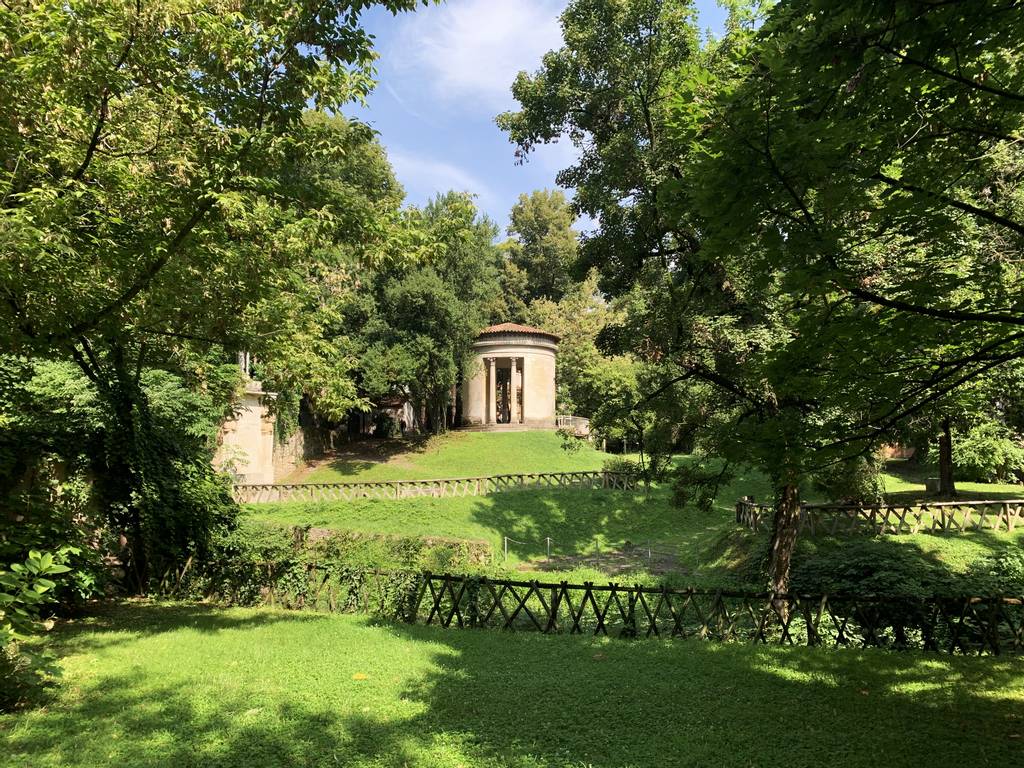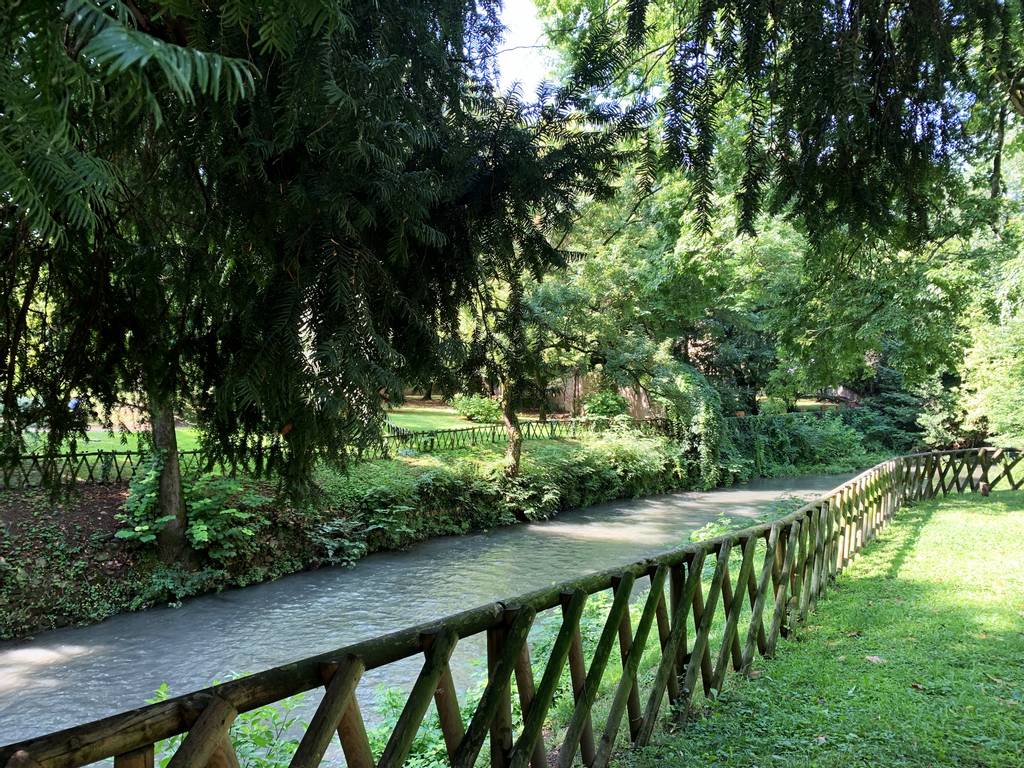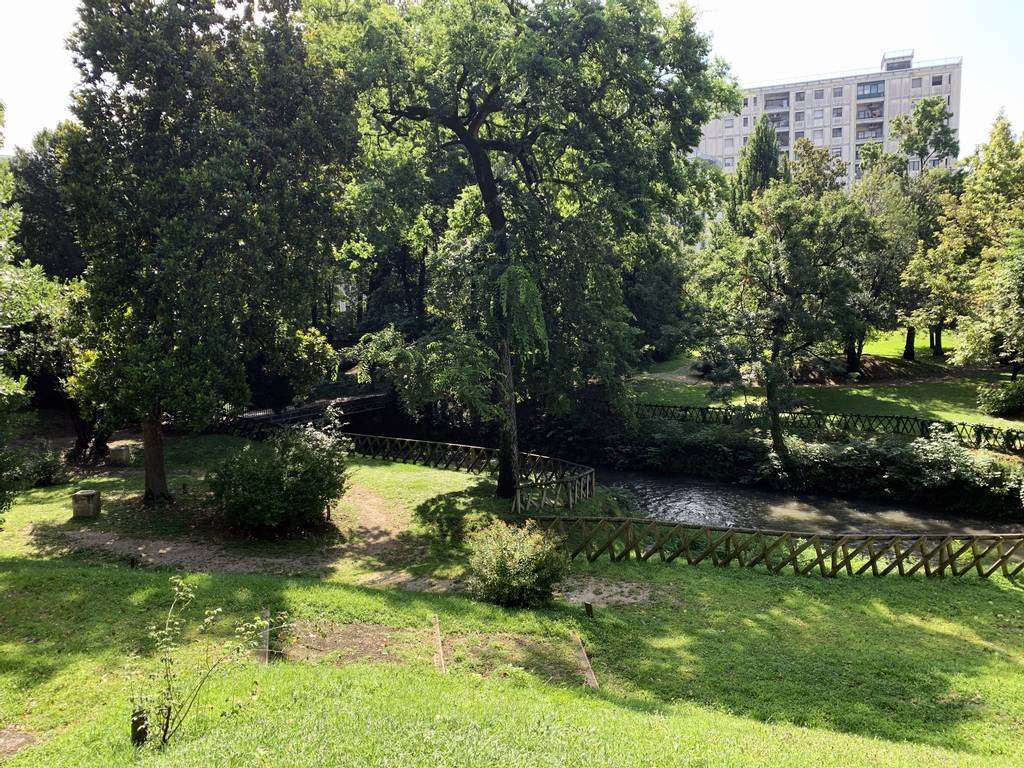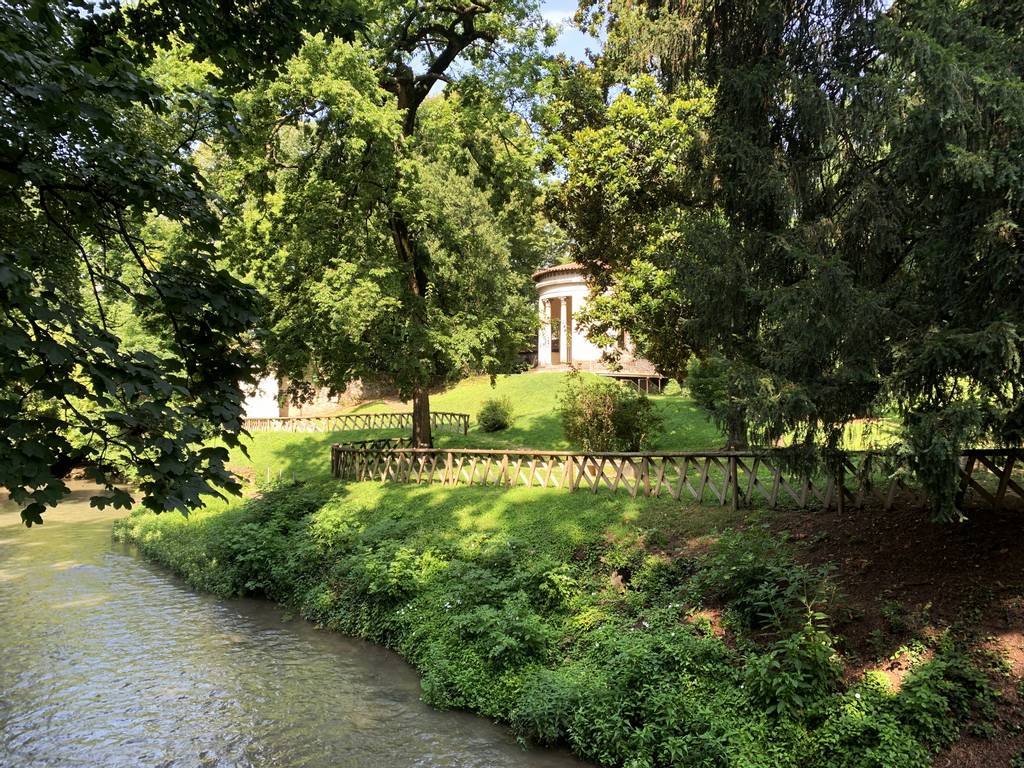Treves De' Bonfili Garden
Traduzione necessaria
The Giardino Treves de' Bonfili is one of Padua’s most renowned historical gardens, a hidden jewel of architectural and landscape creation by Giuseppe Jappelli.

The Treves Garden was built between 1829 and 1835 by a family of wealthy Jewish merchants and bankers from Venice, Treves De' Bonfili. The project was entrusted to the famous Venetian architect Giuseppe Jappeli, who designed the Café Pedrocchi.
The Garden is located in the heart of Padua, a few steps from Porta Pontecorvo, one of the ancient Roman gates of Padua, hidden beyond the buildings overlooking the city’s narrow streets. It has a fascinating history behind it. The park was intended as a private botanical garden inspired by the model of the English gardens popular at the time. After the Second World War, most of the original structure of the Jappellian project was lost due to demolition caused by war events and the expansion of the nearby civil hospital. The park was, at that time, almost abandoned, but in 1954 it was taken over by the Municipality of Padua and opened to the public.
In 2002 the restoration of the garden was finished with the help of valuable nineteenth-century botanical manuals. The added trees were historically common in the nineteenth-century Paduan gardens. Were created areas of historical and botanical interest as the collection of ancient and modern roses, hydrangeas, rhododendrons, azaleas, peonies, and daffodils, highlighting the cultural heritage of the original artefacts restored at their former glory.
Treves Garden is a perfect example of an English garden with its rich and varied vegetation, crossed by a watercourse embellished with bridges, and a recreation of a classical temple on the garden's highest point. The waterway that crosses the park is the Alicorno, one of the artificial canals that flow through the centre of Padua, connecting the Astronomy Tower to Prato della Valle where it reciprocates the waters surrounding the Memmia Island and to the Botanical Garden before arriving in the Treves Garden. Here, an iron bridge that connects the two banks of the garden has been rebuilt according to the original design.
A peculiar building is located under the small Greek-inspired temple, an ice house. A tunnel connected the cellars of the no longer existing Treves palace to the park. Some of the architectural elements concealed, behind an apparent decorative aspect, sophisticated machines required to maintain the various exotic plants, which otherwise could not have survived in the garden’s climate. The surviving stone with two caryatids was one of those, hiding behind a water pump used to irrigate the garden. Other elements were lost, such as the impressive greenhouse or the Alchemist's Cave, with imitations of fossils and animal skeletons.
Originally the garden was one of the very few recognised in Italy for the large variety and rarity of the botanical species, thus being a corner of Eden in the city’s heart, creating a sense of synergy with the oldest public Botanical Garden of Padua. Despite its smaller size compared to the initial project, now developing on over 9600 m², and the loss of many original elements, it remains a fascinating park to visit for tourists and an elegant haven of tranquillity for Paduan citizens, where you can enjoy the summer silence and listen to the bells from the Basilica of St. Anthony.
Accogliamo tutti i contributi, non importa quanto piccoli. Anche una correzione ortografica è molto apprezzata.
Tutti i contributi vengono esaminati prima di essere pubblicati.
Continua al log delle modifiche-

© 'Giardino Treves' di Padova.com è concesso in licenza sotto CC BY 4.0 Attribuzione copiata nel clipboard Impossibile copiare l'attribuzione nel clipboard -

© 'Giardino Treves' di Padova.com è concesso in licenza sotto CC BY 4.0 Attribuzione copiata nel clipboard Impossibile copiare l'attribuzione nel clipboard -

© 'Giardino Treves' di Padova.com è concesso in licenza sotto CC BY 4.0 Attribuzione copiata nel clipboard Impossibile copiare l'attribuzione nel clipboard -

Accogliamo tutti i contributi.
Tutti i contributi vengono esaminati prima di essere pubblicati.
Accogliamo tutti i contributi, non importa quanto piccoli. Anche una correzione ortografica è molto apprezzata.
Tutti i contributi vengono esaminati prima di essere pubblicati.
Continua al log delle modificheAccogliamo tutti i contributi, non importa quanto piccoli. Anche una correzione ortografica è molto apprezzata.
Tutti i contributi vengono esaminati prima di essere pubblicati.
Continua al log delle modificheAccogliamo tutti i contributi, non importa quanto piccoli. Anche una correzione ortografica è molto apprezzata.
Tutti i contributi vengono esaminati prima di essere pubblicati.
Continua al log delle modificheCategoria
Costo
-
Una volta l’umile dimora abitata da Sant'Antonio, il convento si è sviluppato lungo i secoli nei cinque splendidi chiostri posti sul lato meridionale della Basilica
-
356 m
La Basilica del Santo è uno dei santuari più visitati al mondo. Uno scrigno di tesori che custodisce anche le spoglie di Sant'Antonio di Padova, il Santo per antonomasia.
-
408 m
L'Oratorio di San Giorgio è un elegante edificio in stile romanico, con facciata realizzata in mattoni a vista e tre bassorilievi in pietra, tra cui spicca al centro San Giorgio che uccide il drago.
-
414 m
Dominata dalla Basilica del Santo, Piazza del Santo racchiude splendidi capolavori come l'Oratorio di San Giorgio, la Scoletta del Santo e il Gattamelata.
-
461 m
L'Orto Botanico di Padova è il più antico al mondo ospitando circa 6.000 esemplari con 3.500 specie botaniche e il futuristico Giardino della Biodiversità.



